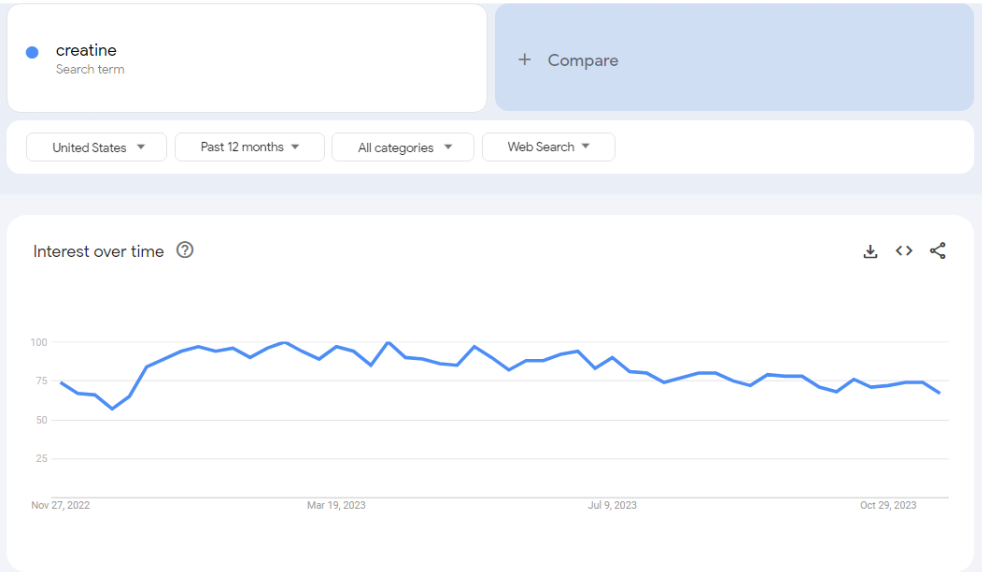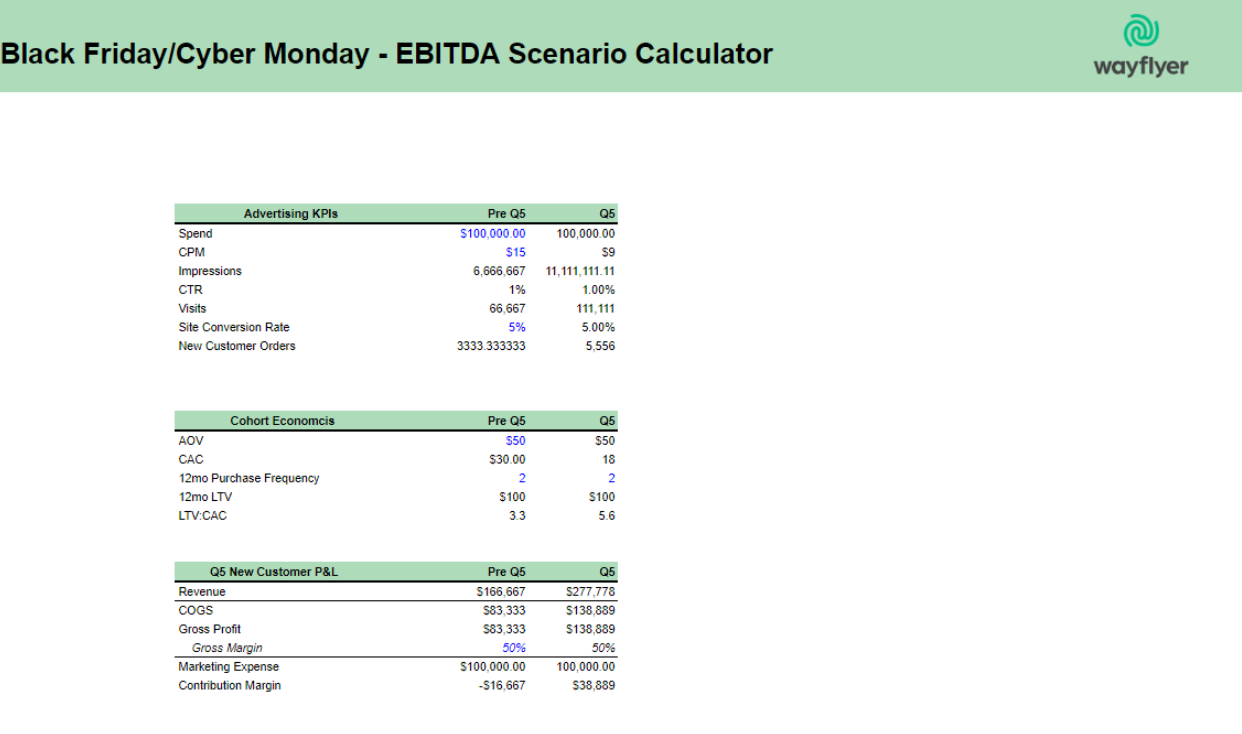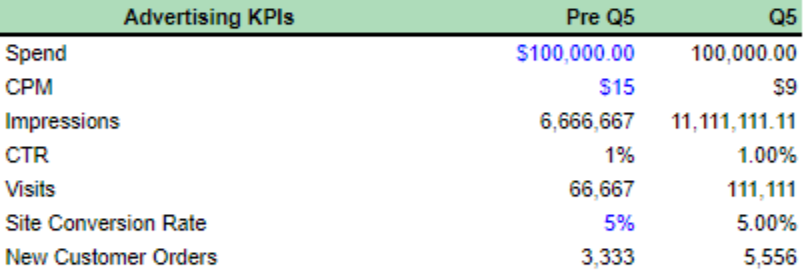Optimizing for Q5
Daniel Nugent
November 30, 2023
Inventory
Congratulations, the sweat of BFCM is over. Hopefully you are sitting on large piles of cash and thinking about how grateful you are that you read our guide on maximizing EBITDA during the shopping holiday.
Now what? Coast through the end of the year to your goals and allow yourself to take a much needed breather?
Before you decide to kick your feet up until the ball drops, we should really talk about what opportunities you may be passing up. Specifically how Q5 represents a really good opportunity to continue to stack that cash.
So, what is Q5? It is generally referred to as the time between Christmas and the new year. December 26th to January 1st, but sometimes extends a week in the new year. This is probably the slowest time of year in business, and is a unique opportunity to acquire an extremely profitable cohort of customers for one simple reason: no other advertisers are paying attention, despite the fact that purchase intent is still elevated. This means CPMs fall and customers are easier to reach.
Big companies pull back on their online advertising, lazy brands are on vacation and many other advertisers simply don’t care. This is the perfect set up for you, the astute entrepreneur, to go on offense.
The especially obvious case to be on offense during Q5 is if you sell a health product, as many new year resolutioners will finally be getting that 6 pack in 2024 . Let’s take creatine for example, a really big ramp in demand in January:

Ok but maybe you don’t sell a health product. Is it still worth it? Well, I keep putting together little excel models whenever I am trying to explain something, and today is no different. Here is the link.
Let’s quickly explore the implications on profitability of a successful Q4, and then you can decide whether hounding your creative team the day after Christmas is worth it to you or not.
Let’s take a dive into my two presented scenarios, "Pre Q5" and "Q5." As we evaluate, notice how a nuanced narrative emerges, reflecting the dynamic interplay of advertising strategies, cohort economics, and the resulting impact on the overall profitability of the business.

First, Advertising KPIs....
The really big lever within Q5 is CPM. The advertising landscape generally experiences a significant transformation during Q5 as we already established. So effectively this model is inquiring about the impact of the business from CPM changes. In the initial scenario, the CPM stood at $15 and in the subsequent "Q5" scenario, we’ve forecasted a CPM at about 60% of baseline during Q5, with a CPM of $9. This reduction implies a more cost-effective approach to garnering impressions during a much more relaxed time of year for the broader advertising industry.
From here, we begin to describe the broader revenue model:
Revenue = Impressions * CTR * CVR * AOV
For the purposes of isolating CPM as the key variable, we are assuming that every other metric across the two scenarios are the same.

We can see right away that the reduced CPMs result in a drastically increased new customer order number. An increased number of new customers will obviously have an impact on sales and profitability, so let’s take a closer look at that now.
Q5 New Customer P&L:
So, because we generated about 2,200 incremental customers by deciding to lean into Q5, we are actually looking at generating more than $100k in incremental revenue. In other words, when we drop our CPM by 40%, our revenue goes up by more than that amount, all else being equal.

The other interesting thing to call out is how this brand went from a cash burn to profitability simply with the changing of the CPM. That’s how powerful CPM really is. The beautiful thing about a well tuned financial model in eCommerce is that every marketing KPI informs financial performance. Changes in CPM create changes in cash flow, changes in CTR create changes in an ending period cash balance, and so forth. This brand in particular can generate about 40k in contribution margin by maintaining all of their other KPIs during a period of depressed CPMs, in the matter of a week. Seems like a pretty good deal, no?
Cohort Economics:
I’ll take you one step further - if $40k sounds good, you’re going to get even more excited when we talk about the implications on profitability at the cohort level.

We are calculating LTV as AOV * Purchase Frequency. If your business has a recurring revenue component to it, the profitability of this cheaply acquired cohort will be even more profound when assessed over a 12 month period, as that lever of purchase frequency will begin to kick into our equation of LTV.
First, let’s look at CAC. A 40% drop in CPM causes an equivalent 40% decrease in CAC. That decrease in CAC is the key driver here. As you look towards our 12 month LTV, in both scenarios it remains the same - however the CAC is the difference.
As long as this cohort behaves in mostly the same way as every cohort, We can increase LTV:CAC by almost 3 full turns by depressing the denominator. That’s high margin recurring revenue directly into your business. Plus, the increase in variable profits are generated during a time when fixed expenses are accrued. So if you increase your contribution margin by $40k in this period of time, all else equal, your cash balance at the end of the year could be $40,000 higher than if you chose not to pursue Q5.
So, all in all, Q5 represents one of those unique times of the year where things may actually be in your favor. As a CPG operator, you’ll take as much of that as you can get. There are a number of ways you can produce this scenario forecasting around lower advertising costs, and this is just one of them. Regardless, you should be able to use this template to tailor to your business so that you can decide for yourself if it's worth it to be more on the offensive as we head into 2024.